NASA’s Armstrong Flight Research Center at Edwards Air Force Base, California, supported the agency by providing flight research and technology development, science flight operations in support of astrophysics and earth science, and atmospheric flight validation in 2016. Celebrating its 70th anniversary this year, Armstrong is NASA’s center of excellence for atmospheric flight research.
Aeronautics
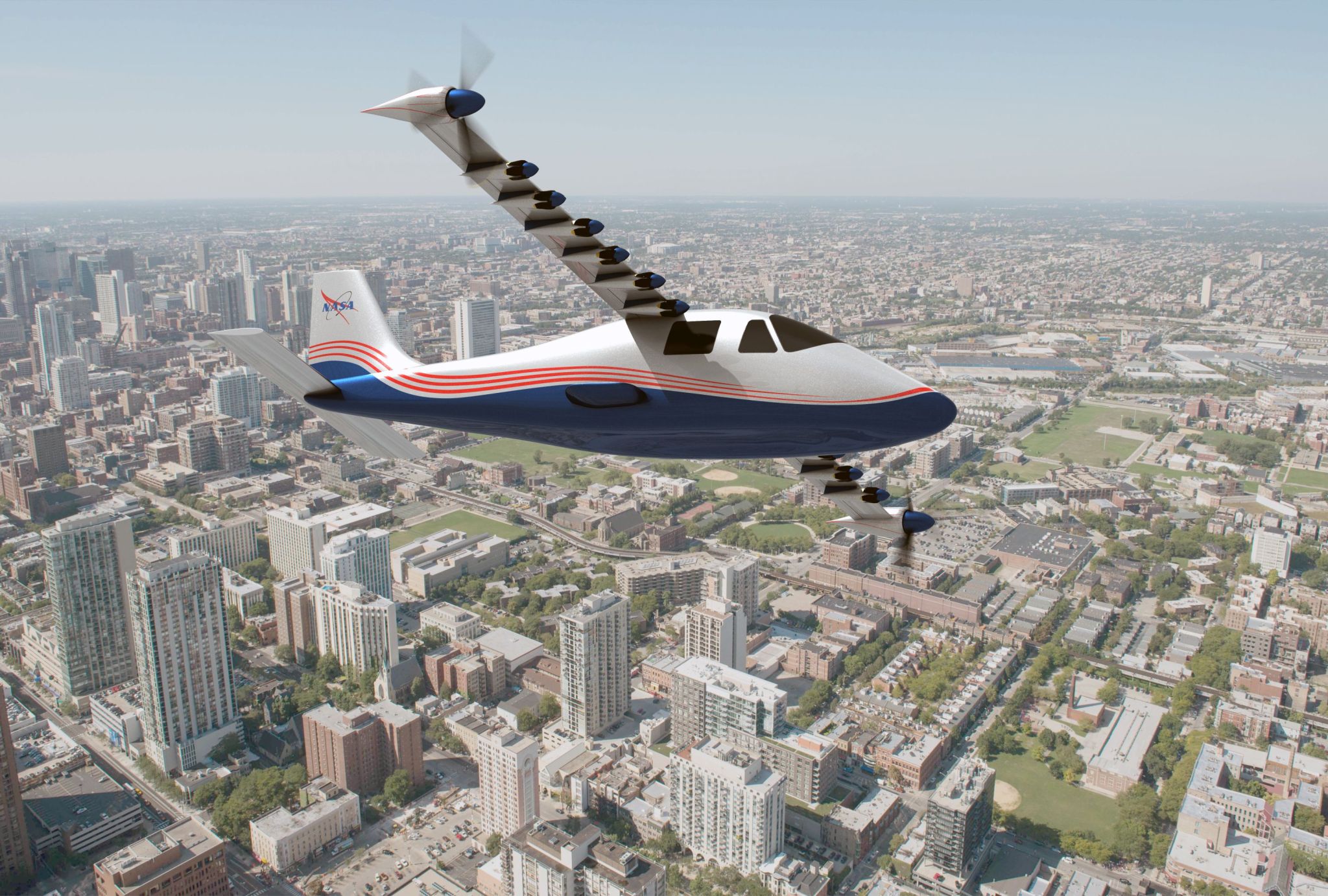
Adaptive Compliant Trailing Edge Flight Experiment
Using the Gulfstream III Subsonic Research Aircraft Testbed, or SCRAT, NASA researchers performed a series of flights to examine the readiness of the aircraft to review integrated test operations required for acoustic research measurement flights. The series, which took place in August and September, provided practice maneuvers for a forthcoming flight test series that will examine the acoustic benefits of landing Gear noise reduction and the Adaptive Compliant Trailing Edge, or ACTE. A separate production G-III was introduced into the flights to provide comparative data between the two aircraft.
In December, researchers began flying a follow-up to 2015’s ACTE research, called ACTE II. These flights began flying at Mach 0.85, demonstrating the morphing wing technology at a higher, more typical aircraft cruise speed. The flights also provided insight into the ability to twist the flap to permit different inboard and outboard angles, which may lead to a means of weight reduction on future aircraft wing designs.
UAS Integration in the National Airspace
Continuing 2015’s successful efforts in testing sensors and algorithms for Detect and Avoid, or DAA, NASA engineers completed Flight Test Series 4, or FT4, which supported Phase 1 Minimum Operational Performance Standards validation for the Federal Aviation Administration. Leveraging lessons learned from 2015’s Flight Test Series 3, FT4 sought to further develop key concepts and technologies that would allow routine airspace access to Unmanned Aircraft Systems, or UAS. Nineteen flights over a two-month period saw NASA’s Ikhana UAS perform 321 scripted encounters with several manned aircraft “intruders” testing and validating DAA technology designed to provide a tool for UAS pilots to observe proximate traffic, and maneuver as necessary to maintain safe separation from other aircraft.
Commercial Supersonic Technology

NASA Administrator Charlie Bolden made an announcement Feb. 29 that the agency had awarded a contract to Lockheed Martin for the preliminary design of the Low Boom Flight Demonstrator, or LBFD, as part of the New Aviation Horizons initiative, introduced in NASA’s 2017 fiscal budget. The announcement marked a critical milestone in NASA’s efforts to demonstrate a supersonic aircraft that would produce a quiet thump in place of the disruptive sonic boom. Levels of noise from supersonic aircraft perceived as acceptable by communities on the ground could open the door to supersonic flight over land on a commercial level.
NASA’s 2016 research in supersonic flight included Background Oriented Schlieren using Celestial Objects, or BOSCO, which helped researchers obtain images of supersonic shock waves coming off of a T-38C aircraft, using an improved image-processing technology that used the sun as a background. In doing so, data was obtained that will help engineers validate tools used to develop the LBFD.
NASA Armstrong also performed a series of flights designed to study how sonic booms travel through the air. The Sonic Booms in Atmospheric Turbulence, or SonicBAT, flights were flown in July, to help researchers measure the effect of low-altitude turbulence on supersonic shock waves reaching the ground. Progress was also made in further developing a cockpit display that allows pilots of supersonic aircraft to see where sonic booms are hitting the ground.
The second phase of Cockpit Interactive Sonic Boom Display Avionics, or CISBoomDA, continued work from 2015’s first phase, now providing the display for the pilot in addition to the flight test engineer. This tool will assist current and future supersonic research projects by helping to make sure sonic booms are kept away from areas of population on the ground.
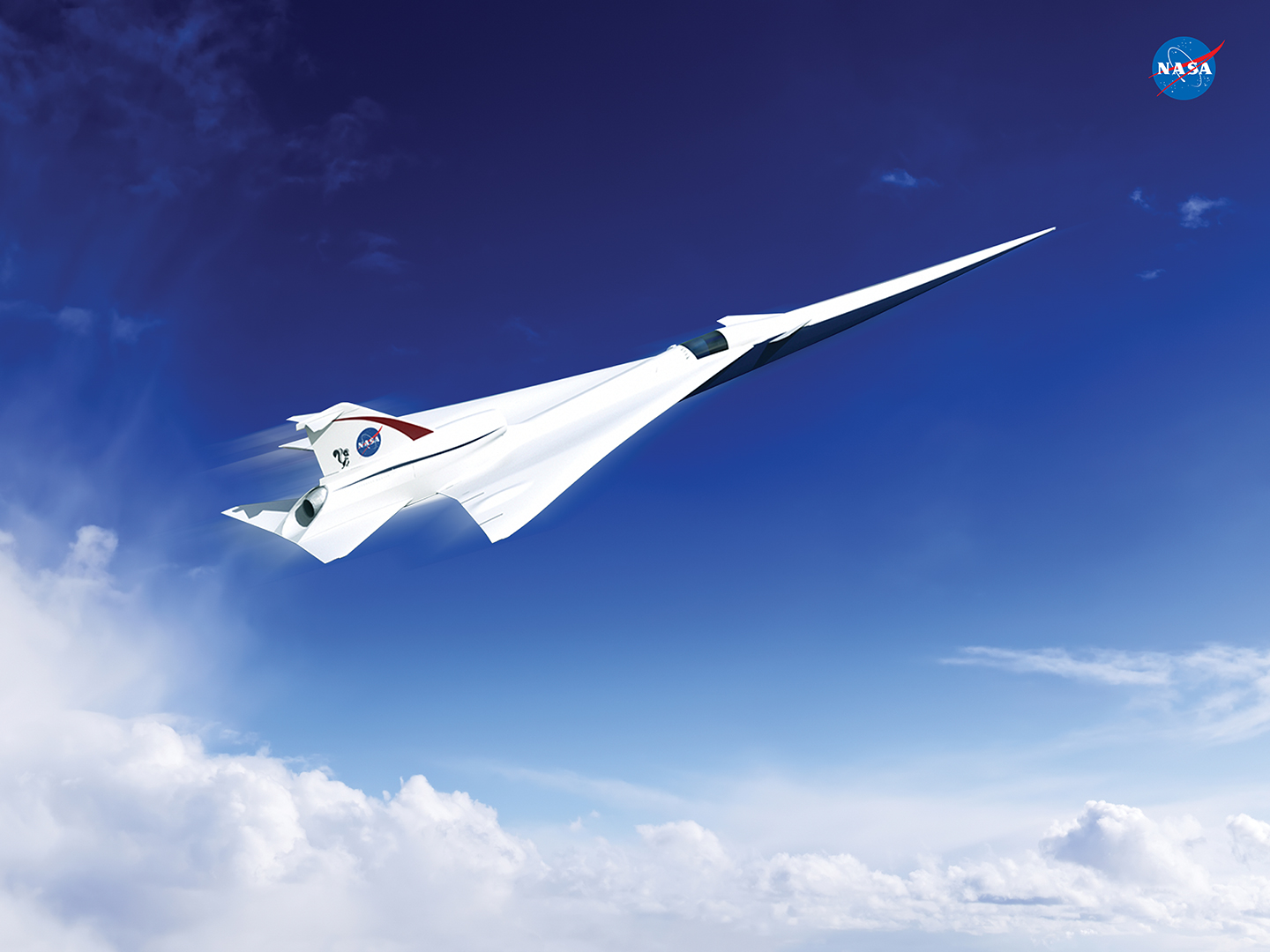
Electric Aircraft Propulsion
As Administrator Bolden made his keynote speech at the American Institute of Aeronautics and Astronautics forum and exposition, the first NASA X-plane designation in a decade was announced. The X-57 Maxwell will be NASA’s first X-plane to feature a distributed electric propulsion system, meant to demonstrate flight that is more efficient, quieter and more environmentally friendly. Now under the Aeronautics Research Mission Directorate’s Flight Demonstrations and Capabilities project, the X-57 team is using data from the Leading Edge Asynchronous Propeller Technology project to begin integrating a Tecnam P2006T with an electric propulsion system.
After the aircraft’s arrival in California in July, the aircraft was trucked down to Mojave, where the baseline wing was integrated with the fuselage. While the aircraft prepares to be integrated with an initial phase of the electric propulsion system, pilots and engineers have developed a simulator designed to give pilots the practice necessary to fly the X-plane.
X-56
In preparation of its next round of taxi and flight testing, the X-56A Multi-Utility Technology Testbed, or MUTT, underwent several phases of testing in NASA Armstrong’s Flight Loads Laboratory. Engineers performed ground vibration testing on the vehicle, suspending it in the air using a bungee system and subjecting it to sensors placed throughout the aircraft to measure responses from stimuli. The ground vibration tests are helping engineers to better understand motion patterns imposed by outside forces, as well as overall structural behavior. Other testing was concluded, including moment of inertia testing, which involved swinging the vehicle to determine how easy or difficult it is to pitch up or down. Data from these tests are going towards updating a finite element model, which will bring the team closer to flight testing.
Prandtl
Armstrong engineers continued work on an aerodynamic wing concept, called the Preliminary Research Aerodynamic Design to Lower Drag, or Prandtl-D, which features a wing twist that could reduce fuel consumption by 11-percent. Following the March publishing of a NASA Technical paper, Prandtl received the first of two applied patents for the wing. Additionally, a team of student interns were instrumental in the first successful flights of the smaller scale Preliminary Research Aerodynamic Design to Land on Mars, or Prandtl-M, aircraft.
Airborne Science
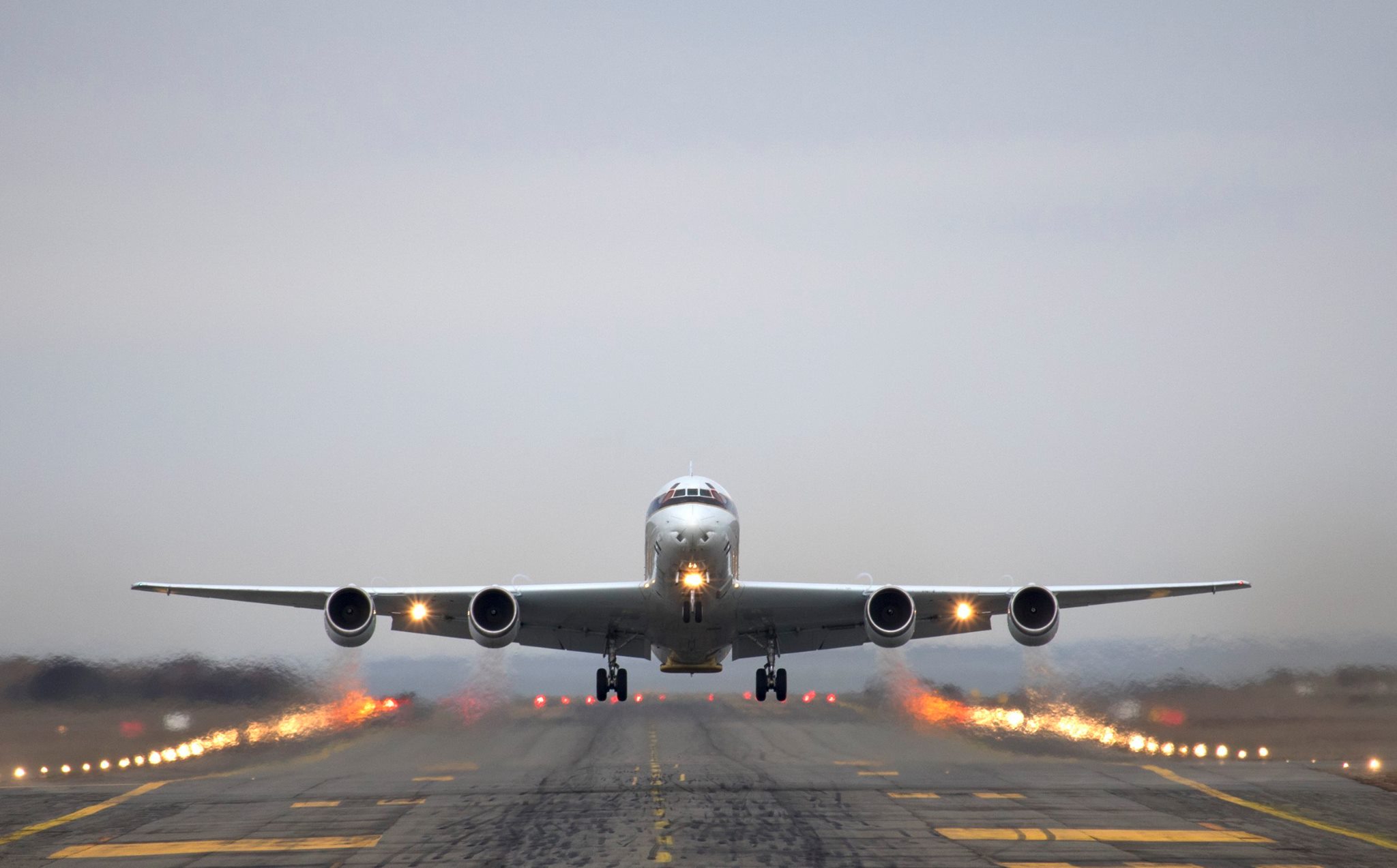
The airborne science aircraft at NASA Armstrong had a busy year as they supported environmental and Earth science research missions under the Airborne Science Program of the agency’s Science Mission Directorate. From glaciers to air pollution, Armstrong’s aircraft were used for a variety of different missions to help further NASA’s research on Earth’s climate.
AfriSAR
NASA airborne instruments and scientists on the ground joined colleagues from space agencies in Gabon and Europe in February to study the dense African tropical forests in Gabon. During the two-week-long campaign, a collaboration with a European Space Agency (ESA) mission called AfriSAR, researchers collected measurements of plant mass, distribution of trees, shrubs and ground cover, and diversity of plant and animal species. Armstrong’s C-20A played a large role by carrying the Uninhabited Aerial Vehicle Synthetic Aperture Radar (UAVSAR) beneath it. UAVSAR collected measurements of surface topography and vegetation structure, creating 3D maps of various targets.
ORACLES
Also in February, was Observations of Aerosols Above Clouds and their Interactions (ORACLES). For this mission, Armstrong’s ER-2 aircraft deployed to the Atlantic coast of southwest Africa. These flights were to validate current satellite observations of aerosols and clouds, and test instruments that may fly on future satellites, by making detailed observations that are impossible to make from space with current capabilities.
KORUS-AQ
In May, NASA and the Republic of Korea participated in a cooperative field study of air quality to advance the ability to monitor air pollution accurately from space. The Korea U.S.-Air Quality study (KORUS-AQ) assessed air quality across urban, rural and coastal areas of South Korea. Armstrong’s DC-8 aircraft had a payload containing five South Korean instruments and conducted eight-hour flights to make direct measurements of the atmosphere from altitudes up to 25,000 feet.
ATom
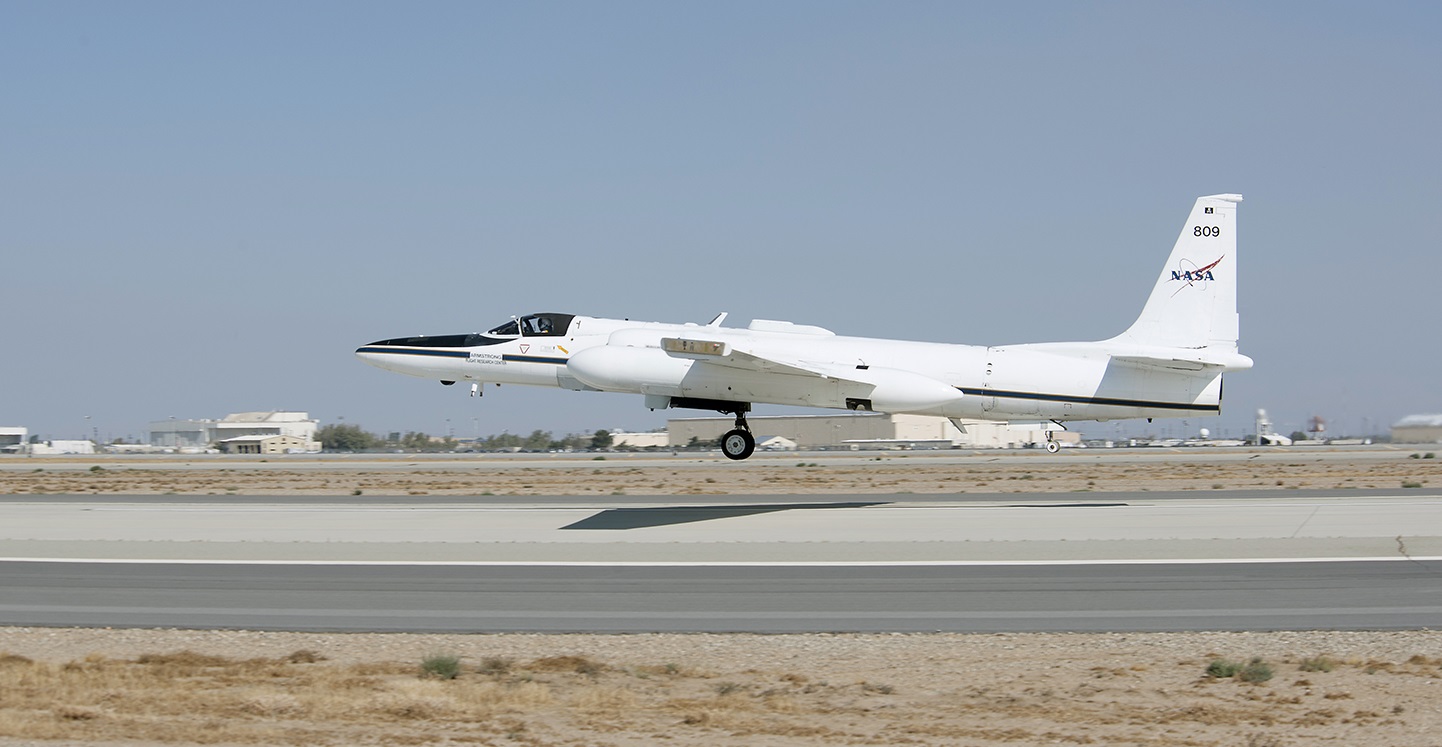
The DC-8 aircraft flew on a 26-day trip around the world in July including stops at Kona, Hawaii, Christchurch, New Zealand and Chile for the Atmospheric Tomography (ATom) mission. The scientists onboard were measuring a suite of more than 200 gases as well as airborne particles from the remotest parts of the atmosphere to better understand the processes that govern how various greenhouse gases cycle around the world.
SHOUT
Also in July, Armstrong’s Global Hawk gathered data for the Sensing Hazards with Operational Unmanned Technology (SHOUT) mission. SHOUT is a three-year research project with NOAA to evaluate the benefits of using the unmanned aircraft to improve severe storm forecasts. In October, NOAA’s National Weather Service National Hurricane Center used real-time weather from our Global Hawk unmanned aircraft to upgrade tropical storm Gaston to a hurricane.
Operation IceBridge
The most recent and final mission for Armstrong in 2016 is Operation IceBridge (OIB). In November, the DC-8 carried a team of scientists and a sophisticated instrument suite to study ice in Antarctica. For the past eight years, OIB has been on a mission to build a record of how polar ice is evolving in a changing environment. For the first time in the Antarctic, OIB used an infrared camera to measure the surface temperature of the ice.
SOFIA
NASA’s Stratospheric Observatory for Infrared Astronomy (SOFIA) program added a new instrument, completed observing flights from Christchurch, New Zealand and NASA Armstrong and publishing new findings.
New Instrumentation
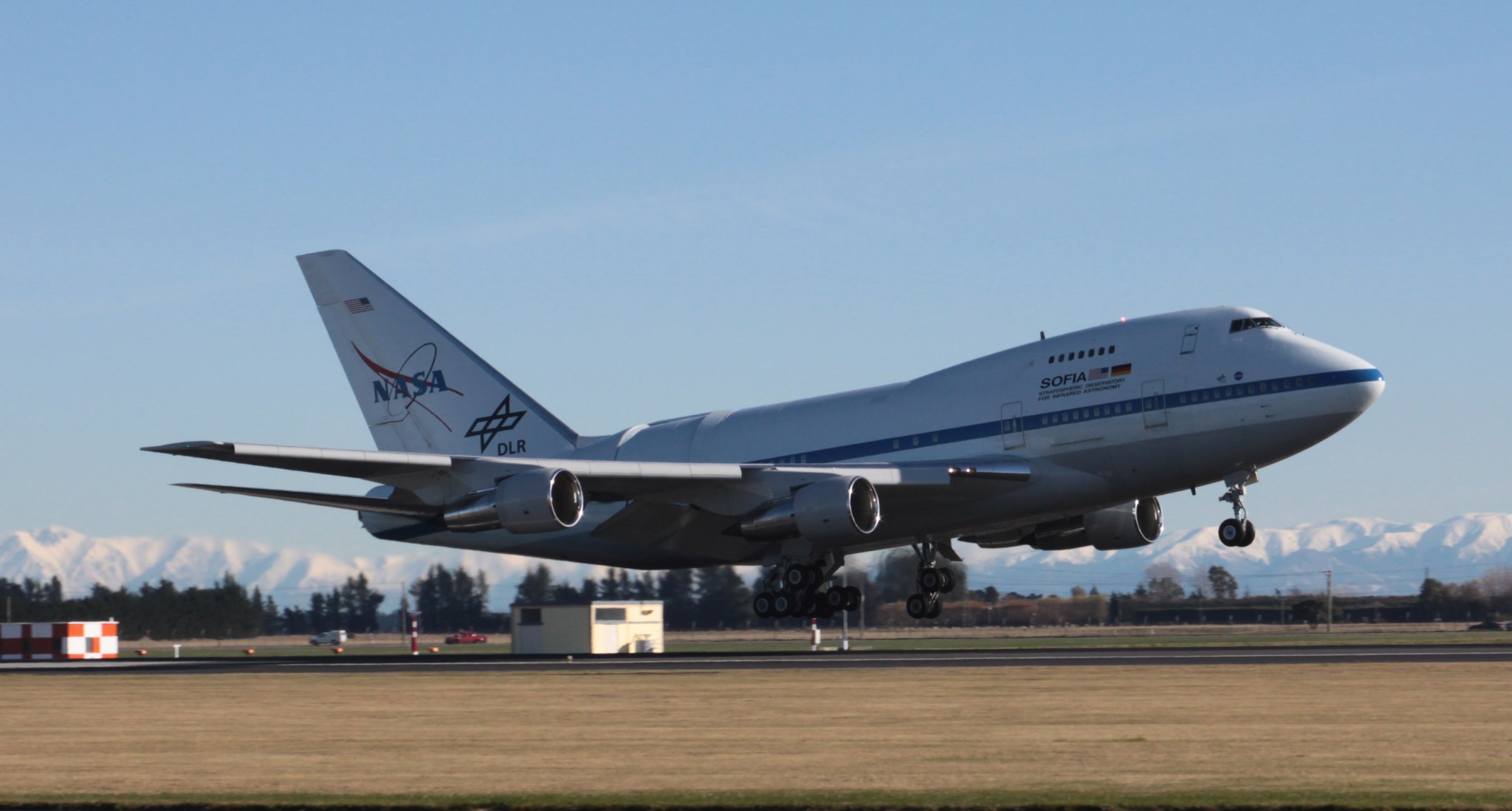
In April, the observatory (a Boeing 747SP jetliner modified to carry a 100-inch (2.5-meter) diameter telescope), added a new instrument, an infrared camera and Polarimeter called the High-resolution Airborne Wideband Camera-Plus (HAWC+). This is the only currently operating astronomical camera that makes images using far-infrared light, allowing studies of low-temperature early stages of star and planet formation.
Observations Extended to 2020
In June, NASA and the German Aerospace Center, DLR, extended their agreement to continue SOFIA science observations until the end of 2020.
New Zealand Deployment
SOFIA deployed for eight weeks to New Zealand in June to study objects that are best observed from the Southern Hemisphere. Deputy Administrator Dava Newman flew onboard the flying observatory in July. Newman was able to observe several targets in space such as a nova and a newly forming star.
Science Findings
Researchers published many new findings made while observing from New Zealand and NASA Armstrong, including that nova eruptions create elements that can form rocky planets, much like Earth. SOFIA’s powerful instruments were also used to detect atomic oxygen in the Atmosphere of Mars for the first time since the 1970s and to Map Orion’s Horsehead Nebula. This map is available to the greater scientific community.
Airborne Astronomy Ambassadors Program
In addition to the scientific achievements of the SOFIA team, 18 educators from across the United States and Germany flew on the observatory as part of the Airborne Astronomy Ambassadors (AAA) program. This professional development program strives to inspire students to pursue careers in science, technology, engineering, and math, or STEM. Aboard SOFIA the educators have the unique opportunity to interact with researchers and aircraft crew, and to witness scientific research. After the STEM immersion experience, ambassadors took at what they learned into their classroom and communities to relate the scientific discovery process and its value to society.
Pratt and Whitney Collaboration
In November, SOFIA shared the ramp at Armstrong’s Building 703 in Palmdale, California, with Pratt and Whitney Canada (PWC)’s 747SP flying testbed aircraft. PWC’s maintenance team and development offices discussed challenges posed by the limited number of Boeing’s 747SP. During the visit, the PWC team planned to host regular user group meetings to continue the discussion of how the programs can aid each other.
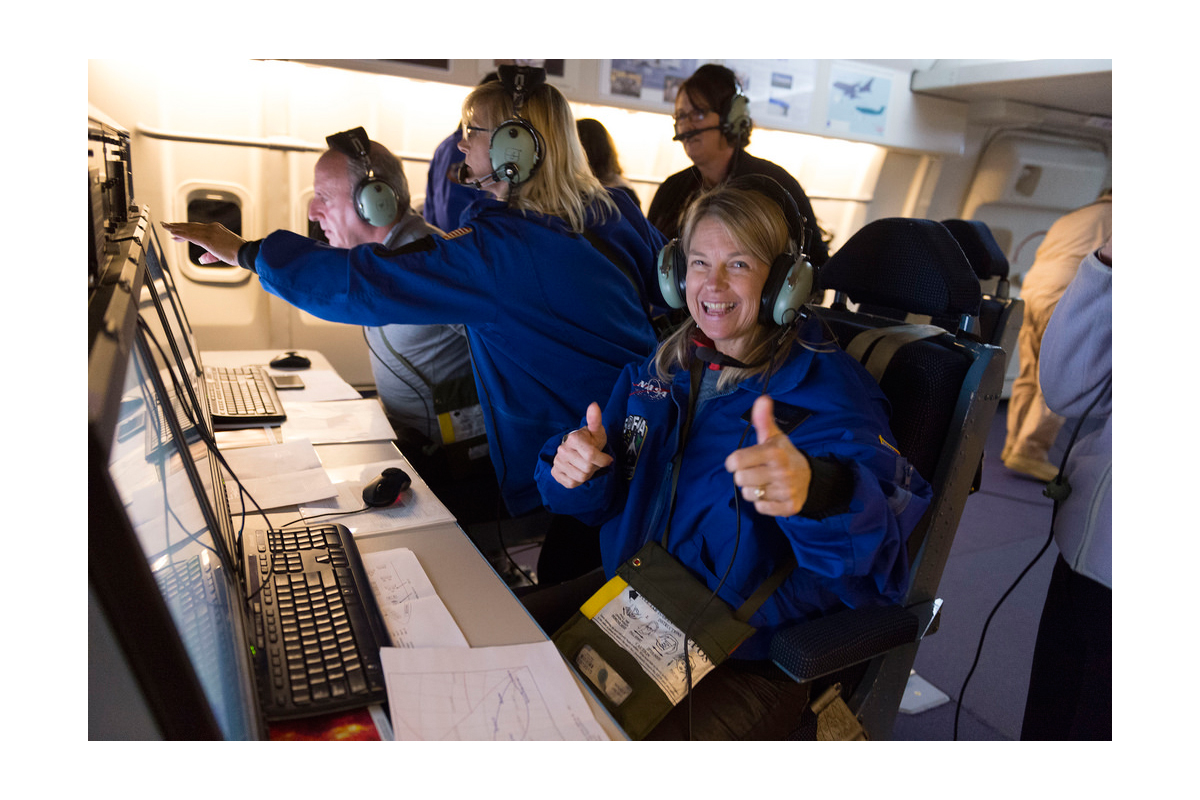
Happening in 2017
Next year the flying observatory will continue to expand frontiers in the solar system and beyond. Observations planned for 2017 include studying Neptune’s moon Triton, the center of the Milky Way Galaxy and possible water plumes on Jupiter’s moon Europa.
SOFIA is a joint project of NASA and the German Aerospace Center. The aircraft is based at NASA Armstrong’s facility in Palmdale, California. NASA’s Ames Research Center in Moffett Field, California, is home to the SOFIA Science Center that is managed by NASA in cooperation with the Universities Space Research Association headquartered in Columbia, Maryland, and the German SOFIA Institute at the University of Stuttgart.
Flight Opportunities Program
Successes
The Flight Opportunities program is designed to mature space technologies as was demonstrated with the successful flight test of a Lander Vision System flown on Masten Space Systems’ rocket, from California, that will now be on NASA’s Mars 2020 rover.
Technology on International Space Station
Another program accomplishment is a 3-D printer by Made in Space Inc. in California, which was flown on a parabolic flight that has been installed on the International Space Station. The printer technology manufactures parts such as wrenches.
An additional program success is the technology known as the Gecko Grippers that are now on the station, which is flying 17,000 mph in orbit around Earth. The Grippers have sticking power that is not affected by the harsh environment of space. The technology was based on the bottom of Gecko’s feet that have tiny hairs to cling to surfaces.
New Launch Provider
The Flight Opportunities program also added Blue Origin’s New Shepard rocket from Van Horn, Texas, as a new launch provider tentatively scheduled for a Flight Opportunities flight in 2017.
Successful Balloon Flights
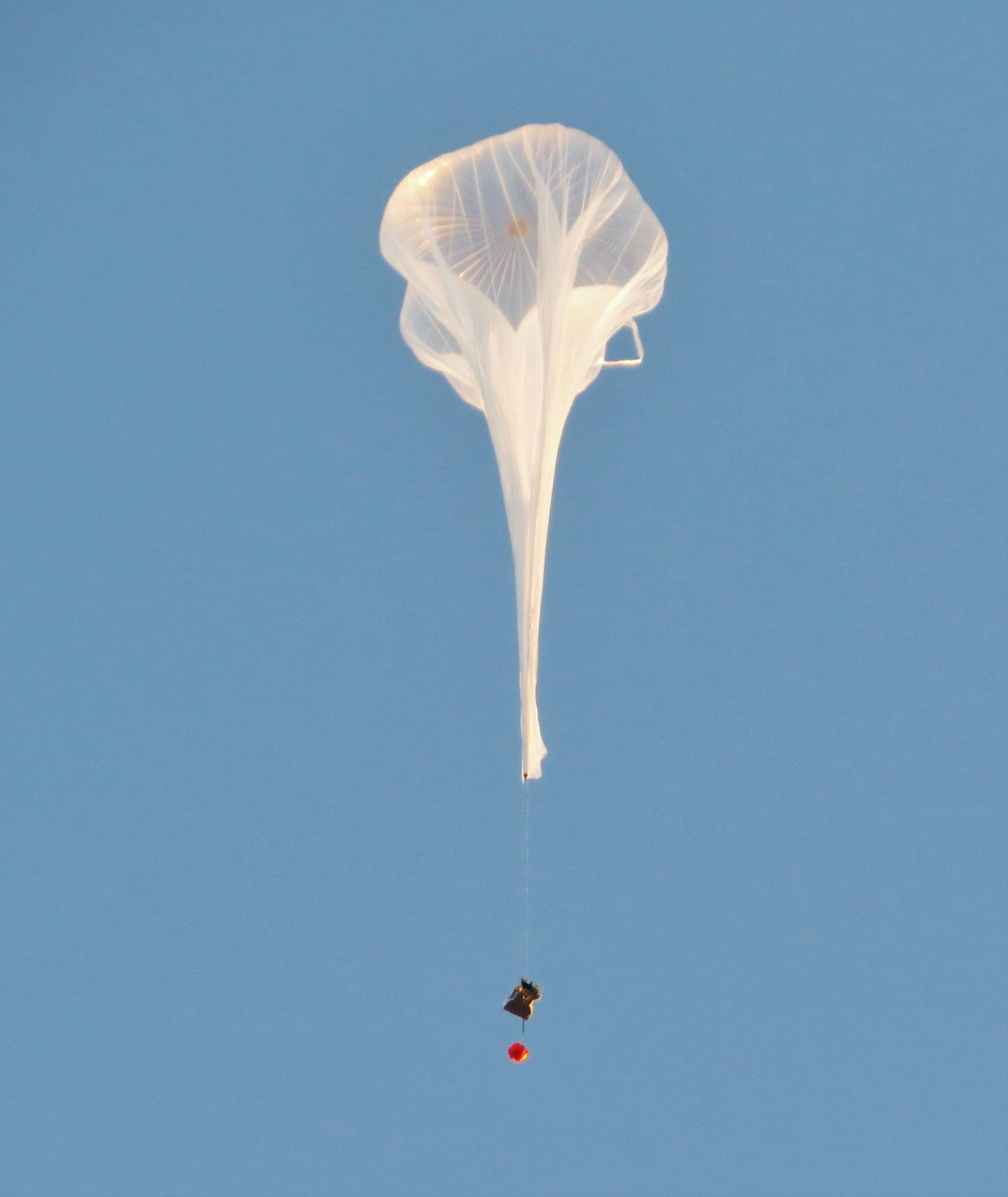
FO’s other high-altitude balloon flight provider, Near Space Corp. in Oregon, recently carried a drone to 70,000-feet altitude with a Federal Aviation Administration communication system technology onboard that could detect commercial spacecraft entering the National Airspace, or NAS, as it descends from space in an effort to have accurate tracking of vehicles.
Through the Flight Opportunities program, NASA’s Space Technology Mission Directorate, STMD, selects promising technologies from industry, academia and government, and tests them on commercial launch vehicles. The Flight Opportunities program is funded by STMD, and managed at NASA Armstrong. STMD is responsible for developing the crosscutting, pioneering new technologies and capabilities needed by the agency to achieve its current and future missions.
For more information about the Flight Opportunities program, visit:
Education
Armstrong’s Office of Education supports activities at the pre-college and higher education levels. The Educator Resource Center at the AERO Institute provided nine professional development workshops for 250 K-12 formal and informal educators.
NASA’s Beginning Engineering, Science and Technology (BEST) provided educator professional development and instructional guides on the engineering design process. Education Specialists collaborated with school district and informal education agency partners providing over 50 workshops and reaching over 1,500 educators.
The AERO Institute managed the, Library Initiative for Teachers and Students (LIFTS) establishing partnerships with five libraries in California and Arizona to integrate NASA content. LIFTS partners receive NASA aeronautics books, high-quality NASA aeronautics-themed educator guides, and library display materials.
Office of Education’s Antelope Valley Educate to Innovate (AVETI) provided the Armstrong workforce with K-12 presentations that inspire the next generation of innovators and explorers. The program offered its first course for employees to learn about strategies for engaging students in science, technology, engineering and mathematics, STEM. The office provided 21 AVETI presentations and events.
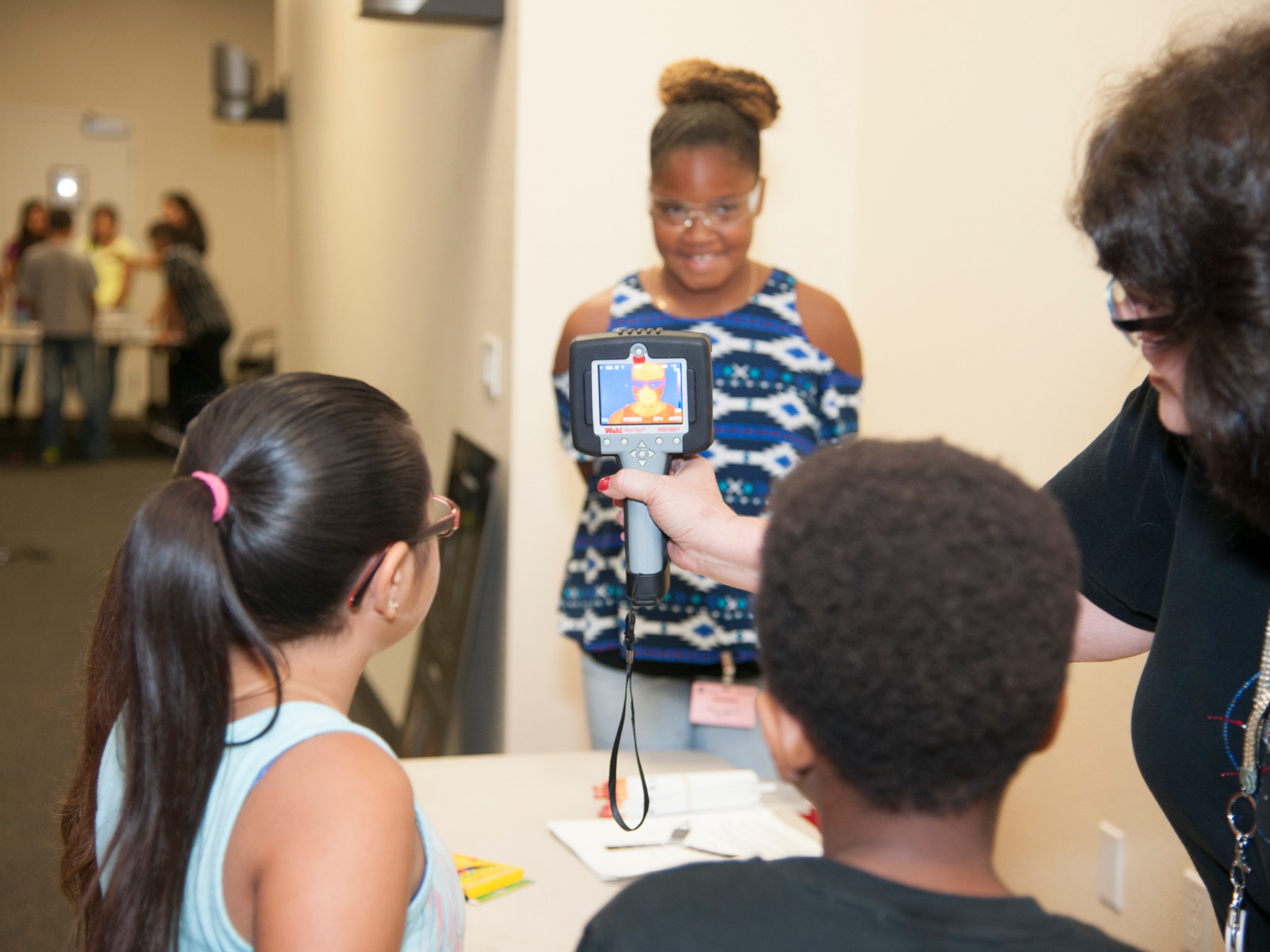
This year, education had 92 student interns, including eight high schools, nine community colleges, and 75 students from four-year universities. Students were represented in 13 center organizations and eight of those students transitioned into NASA’s Pathways internship program.
From across the country, 88 community college students attended the NASA Community College Aerospace Scholars (NCAS) workshops at the AERO Institute. The workshops culminated with students engaged in team engineering design competitions.
Education manages both the NASA Flight Scholars (NFS), a community college hands-on research experience, and the Education Unmanned Aerial System (EduUAS), which is a platform for partnering on research and education activities in the field of Unmanned aircraft. A major accomplishment was the first stable controlled Prandtl-M flight series.
For images, go to:
For more about NASA Armstrong:
https://www.nasa.gov/centers/Armstrong
Anna Kelley
NASA Armstrong Flight Research Center
anna.i.kelley@nasa.gov

























